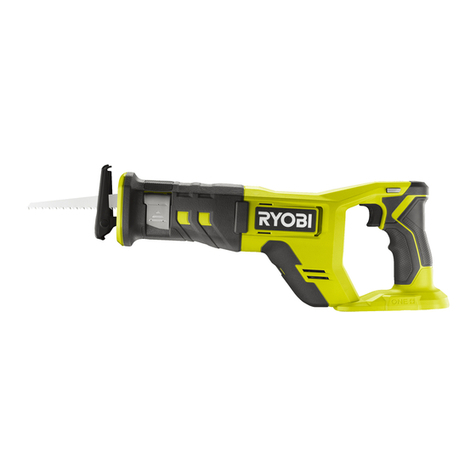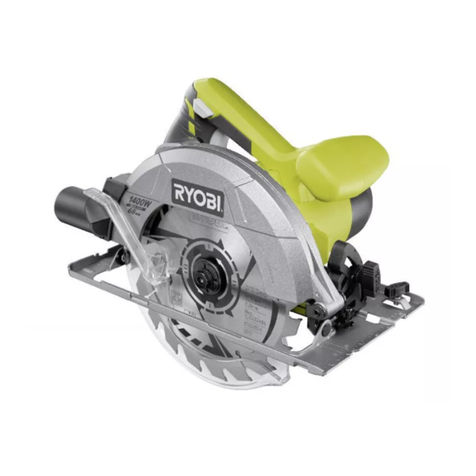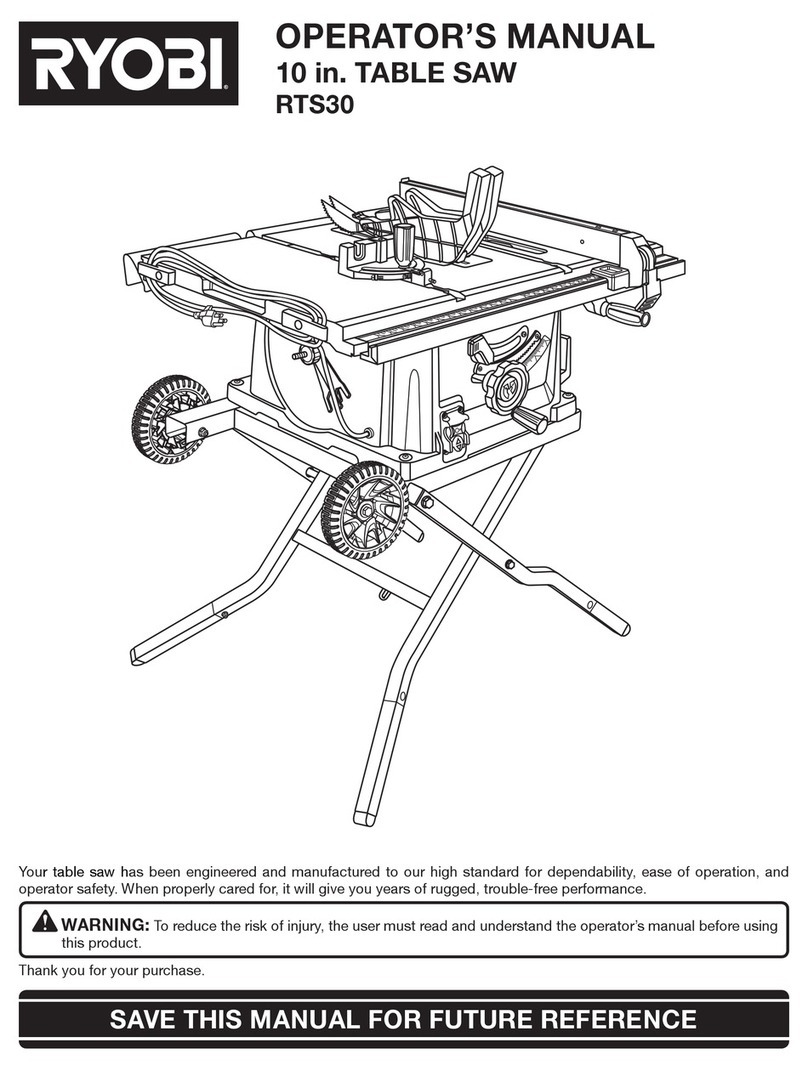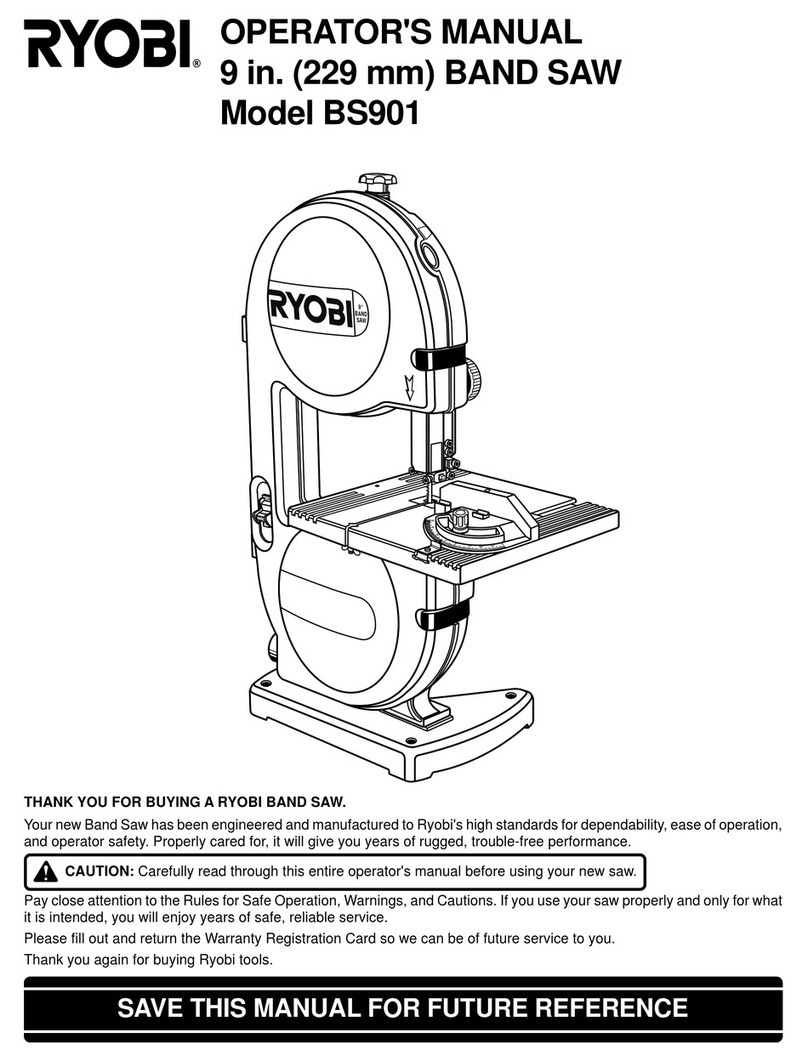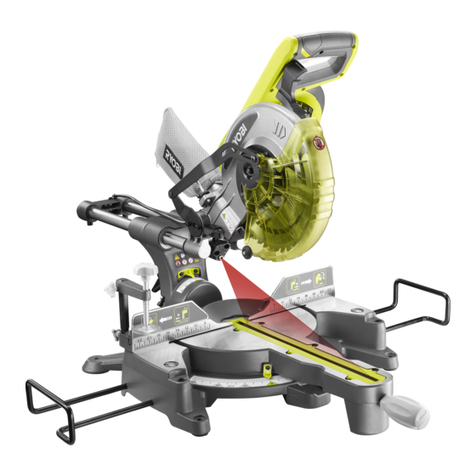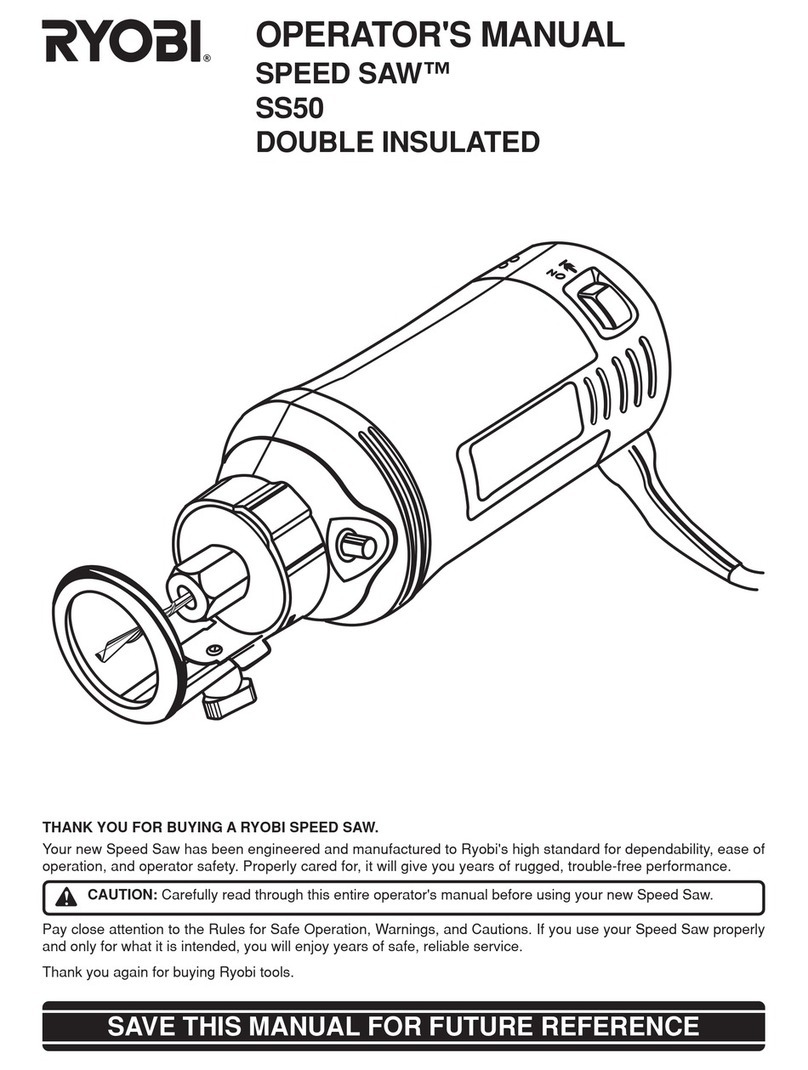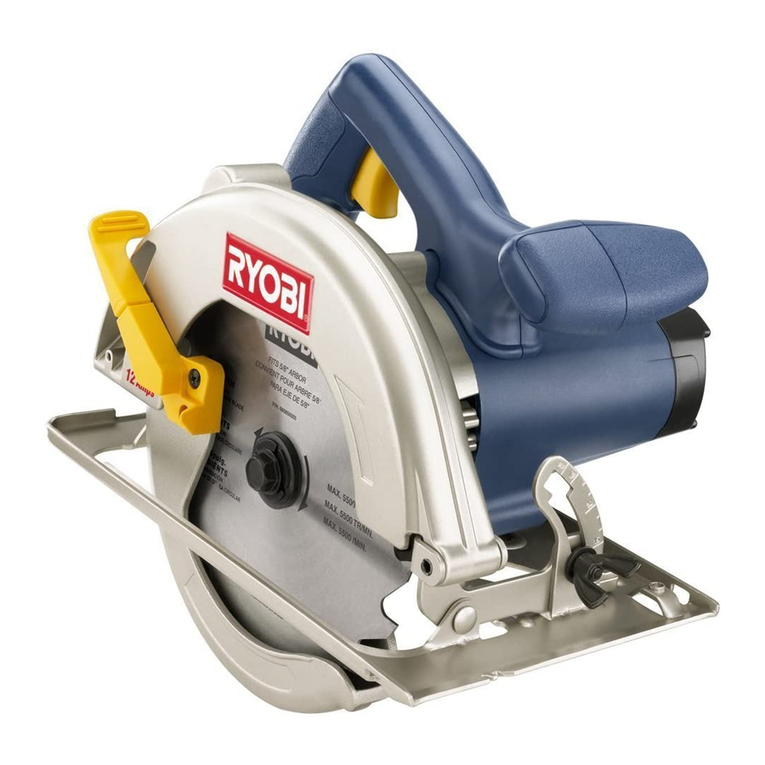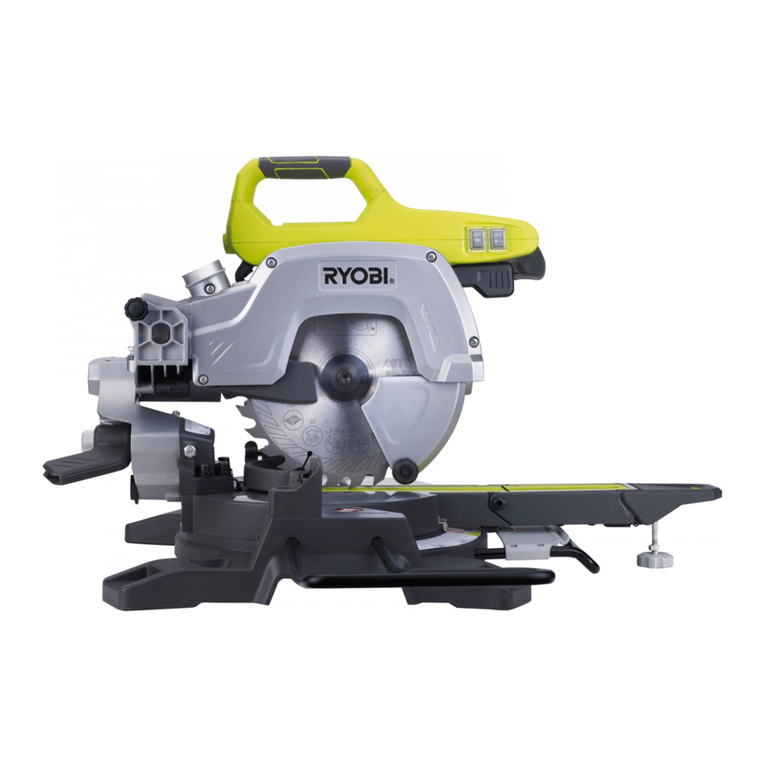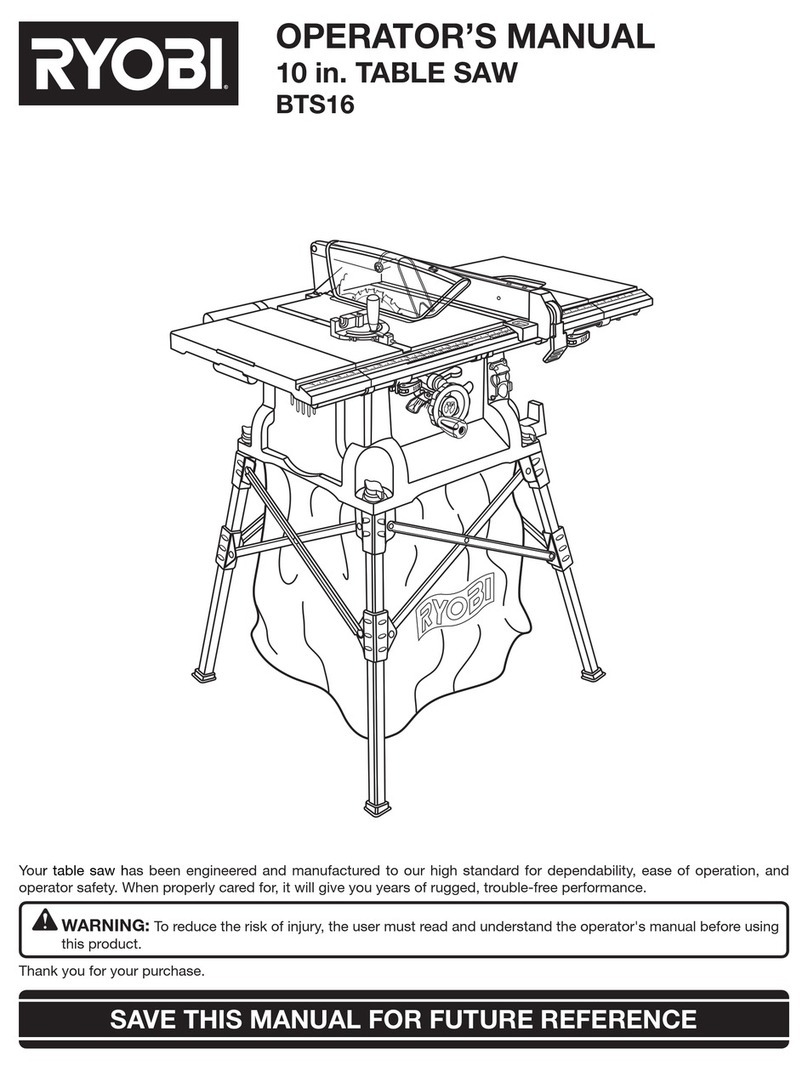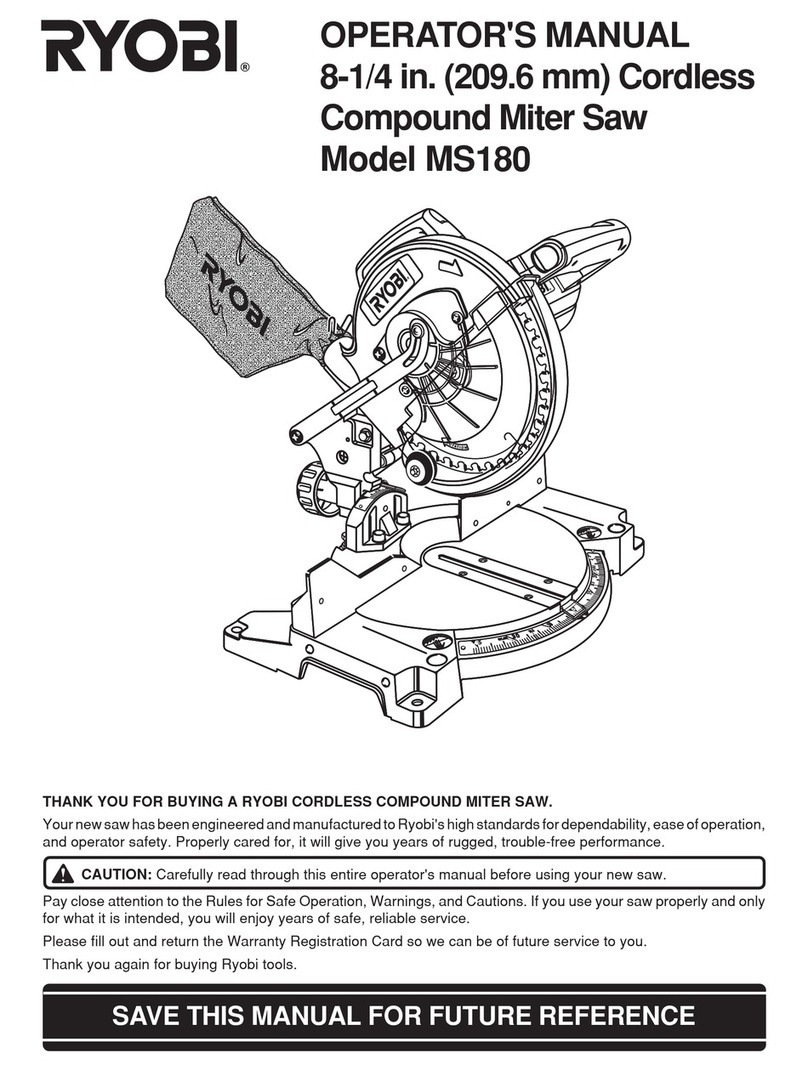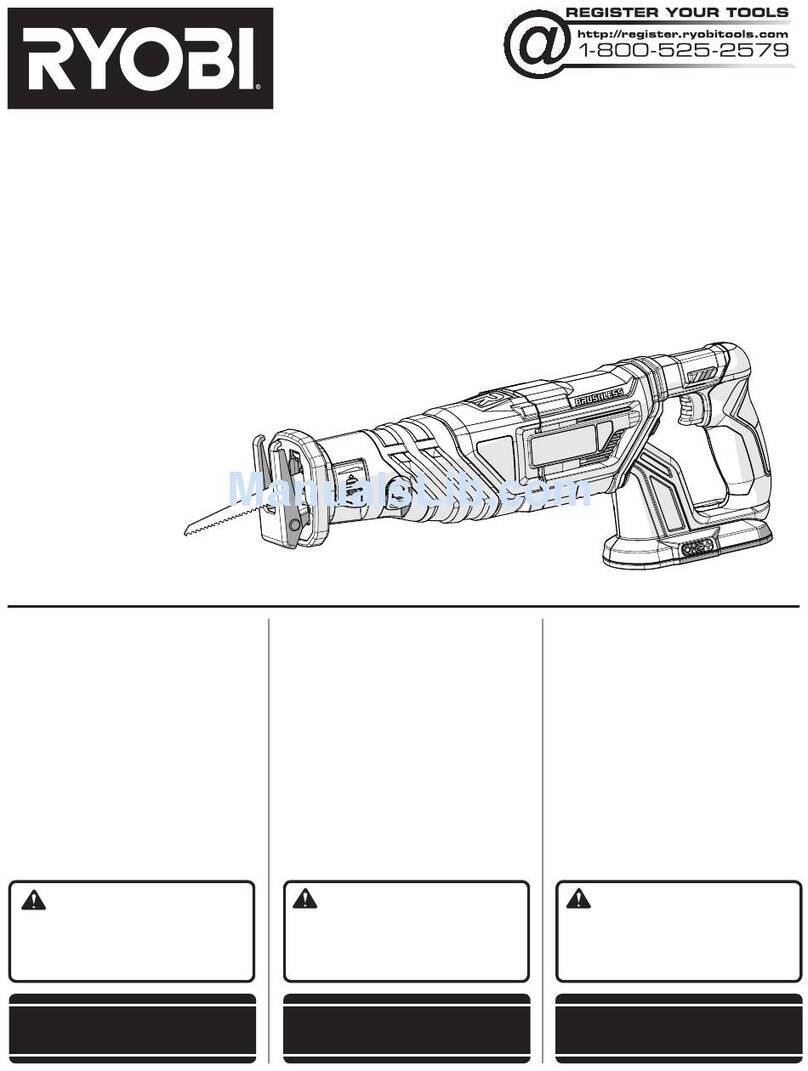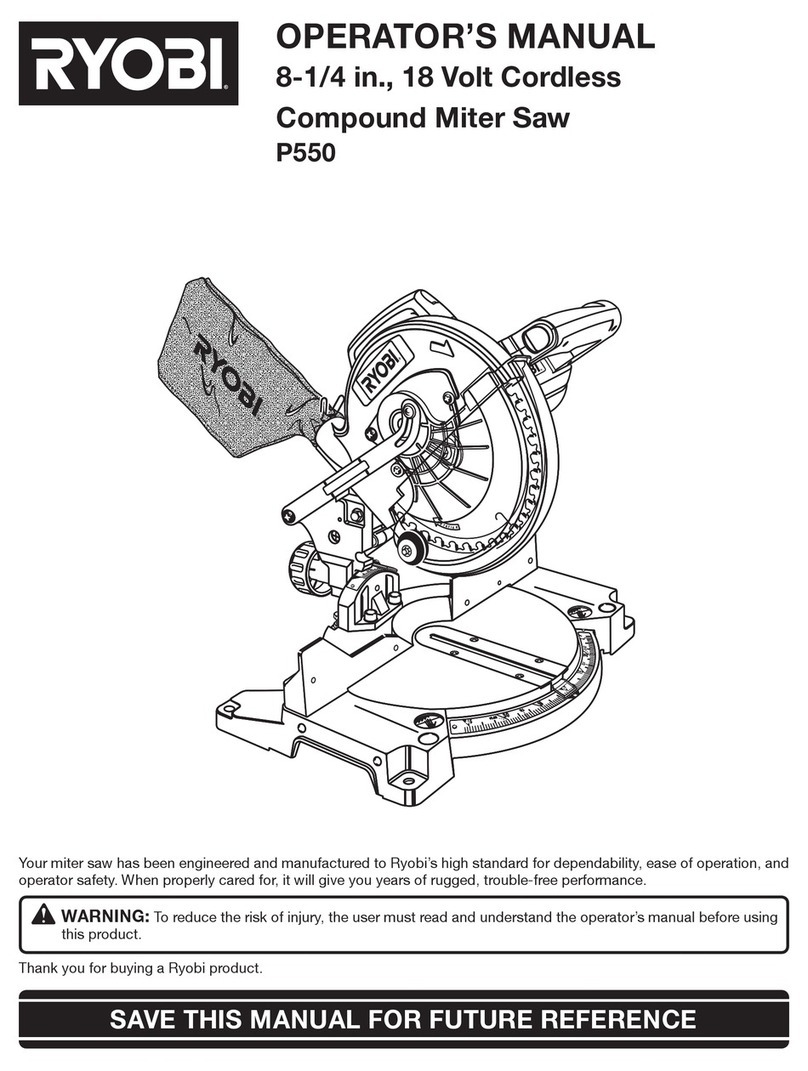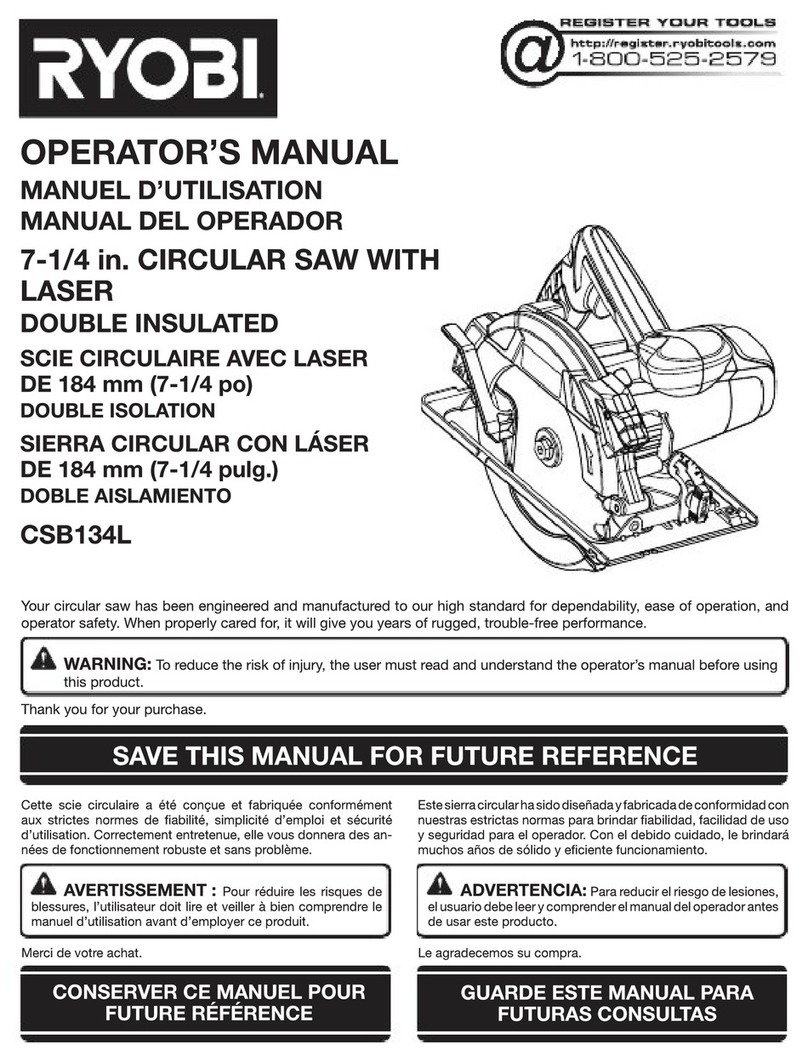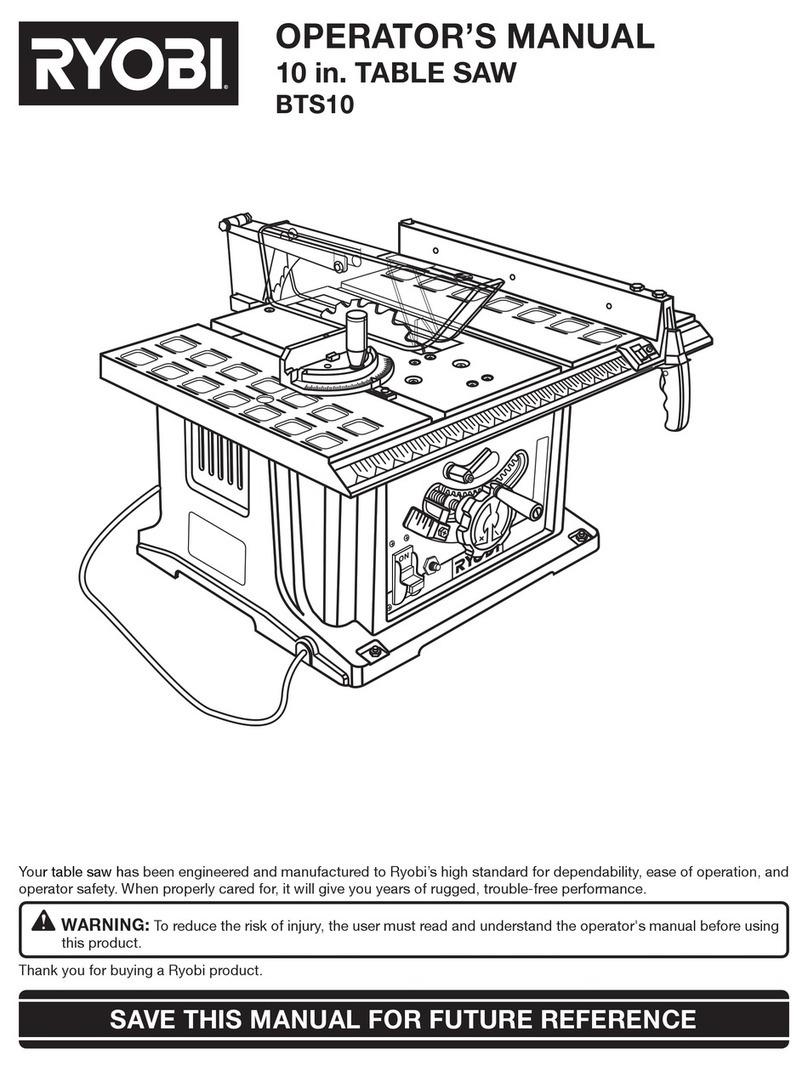
2
SPECIFIC TOOL SAFETY WARNINGS
b) Do not reach underneath the workpiece. The guard cannot
protect you from the blade below the workpiece.
c) Adjust the cutting depth to the thickness of the
workpiece. Less than a full tooth of the blade teeth should
be visible below the workpiece.
d) Never hold piece being cut in your hands or across your
leg. Secure the workpiece to a stable platform. It is
important to support the work properly to minimize body
exposure, blade binding, or loss of control.
e) Hold the power tool by insulated gripping surfaces only,
when performing an operation where the cutting tool
may contact hidden wiring or its own cord. Contact with a
"live" wire will also make exposed metal parts of the power
tool "live" and could give the operator an electric shock.
f) When ripping, always use a rip fence or straight edge
guide. This improves the accuracy of cut and reduces the
chance of blade binding.
g) Always to use only blade diameter(s) in accordance with
the markings.
h) Never use damaged or incorrect blade washers or bolt.
The blade washers and bolt were specially designed for your
saw, for optimum performance and safety of operation.
i) Do not use any abrasive wheels for this saw.
j) With provided blade, users can use it to cut wood and
plastic materials. Please note to avoid overheating the
blade tips and avoid melting the plastic.
k) Dust collection system
A dust extraction outlet has been supplied with the tool.
Connect it to user’s dust collector.When used correctly it can
help remove dust, chips and cutting debris away from the
cutting area.
Kickback causes and related warnings
– kickback is a sudden reaction to a pinched, bound or
misaligned saw blade, causing an uncontrolled saw to lift up and
out of the workpiece toward the operator;
– when the blade is pinched or bound tightly by the kerf closing
down, the blade stalls and the motor reaction drives the unit
rapidly back toward the operator;
– if the blade becomes twisted or misaligned in the cut, the teeth
at the back edge of the blade can dig into the top surface of the
wood causing the blade to climb out of the kerf and jump back
toward the operator.
Kickback is the result of saw misuse and/or incorrect operating
procedures or conditions and can be avoided by taking proper
precautions as given below.
a) Maintain a firm grip with both hands on the saw and
position your arms to resist kickback forces. Position
your body to either side of the blade, but not in line with
the blade. Kickback could cause the saw to jump
backwards, but kickback forces can be controlled by the
operator, if proper precautions are taken.
b) When blade is binding, or when interrupting a cut for any
reason, release the trigger and hold the saw motionless
in the material until the blade comes to a complete stop.
Never attempt to remove the saw from the work or pull
the saw backward while the blade is in motion or
kickback may occur. Investigate and take corrective actions
to eliminate the cause of blade binding.
OPERATION
ASSEMBLY
INTENDED USE
1. Connect the plug to the power supply.
2. To start the tool, depress the lock-off button and pull the
switch trigger.
3. Release the trigger to turn the tool off.
To remove the blade (Fig. 3)
1. Place the saw on its side of a flat surface.
2. Rotate the saw blade by hand while depressing the Spindle
Lock Button until the blade is locked, Turn the blade clamp
screw with the wrench provided in an anti-clockwise direction.
3. Remove the blade clamp screw and outer flange.
4. Lift the lower guard by using the lower guard lever and
remove the blade.
5. Clean the saw blade flanges, and then mount the new saw
blade onto the spindle against the inner flange.
6. Make sure the saw teeth and arrow on the blade face the
same direction.
7. Reinstall the outer flange, washer and tighten the blade
clamp screw.
8. Make sure the saw blade can run freely by carefully turning
the blade by hand.
PARALLEL CUT ADJUSTMENT
1. Loosen the parallel guide fence locking screw.
2. Slide the fence through the slots in the shoe to the desired
width.
3. Tighten the lock screw to secure it in the position.
4. Ensure that the fence rests against the wood along its entire
length to give a consistent parallel cuts.
To install the saw blade (Fig. 2)
1. Place the saw on its side on a flat surface.
2. Use the hex wrench to loosen the hex bolt (15)
counterclockwise and remove it, remove the outer flange (16).
3. Lift the lower guard by using the lower guard lever.
4. Mount the saw blade (14) onto the spindle against the inner
flange (17) and make sure the saw teeth and arrow on the
guard is to the same direction.
5. Reinstall the outer flange (16) and hex bolt use the hex
wrench to securely tighten the bolt clockwise.
6.Make sure the saw blade can run freely by carefully turning
the blade by hand.
Check for damage to the tool, parts and accessories which may
have occurred during transportation. Take some time to read this
manual carefully and understand all the content prior to
assembly and operation.
Sawing and mitre cutting all types of wood.
Do not use for cutting metal or masonry.
Always operate on a flat surface. Check and ensure the working
surface is flat and sturdy before operation. (Fig. 4)
Always operate with both hands. Using one single hand during
operation is dangerous and not allowed. (Fig. 5)
CAUTION
Always ensure that the tool is switched off and
unplugged from the mains supply before assembly.
NOTE
Before engaging the on/off switch, check the saw blade to see if
it is fitted properly and runs smoothly, and the blade clamp
screw is well tightened.
3
c) When restarting a saw in the workpiece, centre the saw
blade in the kerf and check that saw teeth are not
engaged into the material. If saw blade is binding, it may
walk up or kickback from the workpiece as the saw is
restarted.
d) Support large panels to minimise the risk of blade
pinching and kickback. Large panels tend to sag under
their own weight. Supports must be placed under the panel
on both sides, near the line of cut and near the edge of the
panel.
e) Do not use dull or damaged blades. Unsharpened or
improperly set blades produce narrow kerf causing
excessive friction, blade binding and kickback.
f) Blade depth and bevel adjusting locking levers must be
tight and secure before making cut. If blade adjustment
shifts while cutting, it may cause binding and kickback.
g) Use extra caution when sawing into existing walls or
other blind areas. The protruding blade may cut objects
that can cause kickback.
Lower guard function
a) Check lower guard for proper closing before each use.
Do not operate the saw if lower guard does not move
freely and close instantly. Never clamp or tie the lower
guard into the open position. If saw is accidentally
dropped, lower guard may be bent. Raise the lower guard
with the retracting handle and make sure it moves freely and
does not touch the blade or any other part, in all angles and
depths of cut.
b) Check the operation of the lower guard spring. If the
guard and the spring are not operating properly, they
must be serviced before use. Lower guard may operate
sluggishly due to damaged parts, gummy deposits, or a
build-up of debris.
c) Lower guard may be retracted manually only for special
cuts such as "plunge cuts" and "compound cuts". Raise
lower guard by retracting handle and as soon as blade
enters the material, the lower guard must be released. For
all other sawing, the lower guard should operate
automatically.
d) Always observe that the lower guard is covering the
blade before placing saw down on bench or floor. An
unprotected, coasting blade will cause the saw to walk
backwards, cutting whatever is in its path. Be aware of the
time it takes for the blade to stop after switch is released.
SWITCHING ON AND OFF
INSTALLING OR CHANGING SAW BLADE
SYMBOLS
Safety alert
Wood
Do not cut metals
Wear ear protection
Wear eye protection
Danger! Sharp blade
Do not expose to rain
Width of cut
Class II, double insulated
Regulatory Compliance Mark (RCM).
Product meets applicable regulatory
requirements.
Please read the instructions carefully
before starting the machine.
Waste electrical products should not be
disposed of with household waste.
Please recycle where facilities exist.
Check with your local authority or retailer
for recycling advice.
WARNING!
WARNING!
Cutting procedures
DANGER: Keep hands away from cutting area and
the blade. Keep your second hand on auxiliary
handle, or motor housing. If both hands are holding
the saw, they cannot be cut by the blade.
a)

